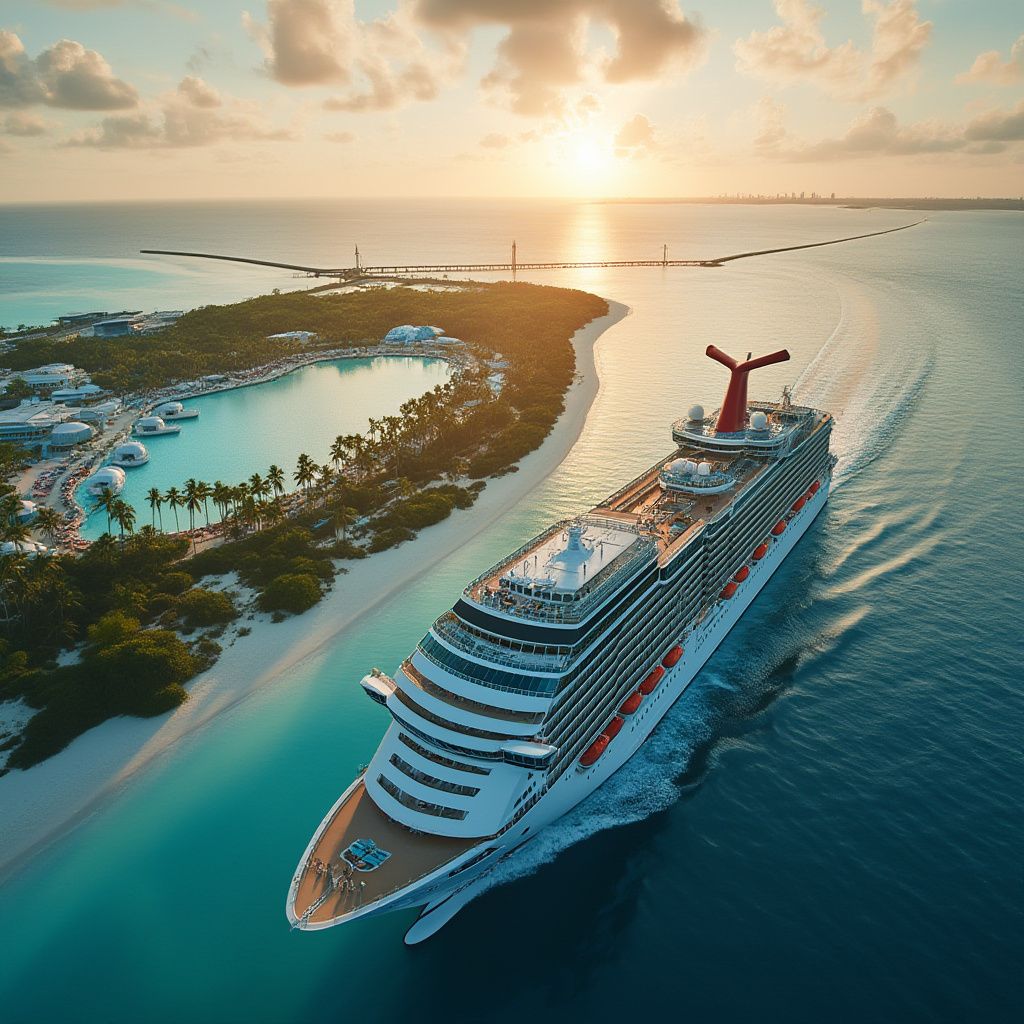Carnival Lifts Profit Forecast: The Pricing Power Play Most Missed
Carnival lifted its 2025 profit forecast on strong bookings and pricing. Here’s what it means for fares, private islands, and investors—minus the hype.

Carnival just raised guidance on September 29, 2025, citing stronger bookings and higher ticket pricing in North America and Europe, according to Reuters. The move signals consumers are still paying up for cruises—even with inflation and fuel costs lurking in the background.
What Carnival actually raised—and why it matters
Reuters reports Carnival lifted its full-year adjusted EPS forecast to $2.14 from $1.97. That’s not a rounding error; it’s a confidence statement about demand, yields, and onboard spending. When a cruise giant narrows or lifts guidance, it typically reflects strong pricing discipline and high occupancy in the near term.
In plain English: people are booking earlier and paying more for the cabins they want. Carnival’s commentary points to resilient demand across its core markets, with North America and Europe carrying the momentum.
- Quick stats
- Forecast: Adjusted EPS to $2.14 (from $1.97)
- Demand: Strong into 2026; early momentum for 2027
- Pricing: Higher ticket prices in North America and Europe
- Strategy: Investments in exclusive destinations (e.g., Celebration Key)
- Risks: Inflation, tariffs, and fuel costs
Bookings into 2026—and the 2027 whisper
Per Reuters, Carnival sees strength locked in through 2026 and even “early momentum” for 2027. Forward booking visibility is the cruise industry’s superpower. It lets operators manage inventory, push price when demand is hot, and adjust promos only where needed. If 2027 chatter is already positive, pricing has a tailwind—particularly for peak seasons and premium cabin types.
The nuance: long lead times are a gift and a risk. Strong forward books can fortify pricing power, but they also raise the bar for execution. Any shock—fuel spikes, geopolitical disruptions, or a demand wobble—can force discounting later to keep ships full.
Exclusive destinations are the quiet margin lever
Carnival highlighted investments in exclusive destinations, pointing to Celebration Key in The Bahamas. Private or exclusive ports are more than pretty beaches; they’re yield machines. Operators control the experience, influence spending ashore, and capture more of every vacation dollar, from cabanas to cocktails.
According to Reuters, this strategy is front and center for Carnival. Expect more itineraries that rotate through proprietary or semi-exclusive stops. For guests, that often means upgraded amenities and smoother logistics. For investors, it often means higher onboard revenue per guest and better cost control versus crowded, fee-heavy public ports.
The risks that could dent the rally
Carnival’s own risk list—again via Reuters—reads like a macro checklist: inflation, tariffs, and fuel costs.
- Inflation: Wage and supplier pressures can squeeze margins if ticket prices stop climbing.
- Tariffs: Higher import costs can ripple through shipbuilding and onboard sourcing.
- Fuel: Marine fuel is volatile. Even with a growing mix of efficient, lower-emission ships across the industry, energy prices can move faster than pricing can adjust.
Add the usual cruise variables—weather, geopolitical events, and currency swings—and you see why management threads the needle between optimism and caution.
What this means if you’re booking a cruise
For travelers, the read-through is straightforward: strength into 2026 suggests fewer fire-sale fares during peak windows and on marquee ships. Deals won’t disappear, but the best cabins and school-holiday sailings will get snapped up early.
-
Pros for guests
- New and refreshed private-destination experiences
- More investment in onboard product as profits firm up
- Better itinerary variety as capacity is allocated to strong-demand regions
-
Cons for guests
- Less last-minute bargain hunting during peak seasons
- Potential fuel surcharges or price firmness if costs rise
- Popular sailings selling out earlier, limiting flexibility
Tip: If your dates are fixed, book sooner. If you’re flexible, shoulder seasons and less-trafficked itineraries are where value still lives.
The investor angle: pricing power, capacity, and discipline
If you’re reading this through an investor lens, guidance matters because it reflects pricing power—arguably the most important variable in cruise recovery math. Carnival’s raised EPS midpoint points to healthy net yields and onboard spend. Layer in destination control (like Celebration Key) and you get operating leverage that doesn’t depend solely on headline fares.
The watch items from here:
- Cost curve: Fuel and food costs can swing quickly; watch for hedging commentary and efficiency gains.
- Promotional cadence: Sustained discounting would be an early warning that demand is softening.
- Mix: North America and Europe strength is good; diversification reduces geopolitical exposure.
If management keeps price discipline while delivering private-destination wins, margin expansion can continue—even if macro headwinds persist.
Summary
-
Reuters says Carnival raised its 2025 adjusted EPS forecast to $2.14 on September 29, 2025.
-
Strong bookings and higher ticket prices in North America and Europe are doing the heavy lifting.
-
Exclusive destinations (e.g., Celebration Key) aim to boost yields and guest spend.
-
Risks: inflation, tariffs, and volatile fuel costs could pressure margins.
-
The bottom line
- Carnival signaled real pricing power into 2026—and early 2027 tailwinds.
- Private-destination strategy is a quiet margin engine.
- For travelers: book early for peak dates; hunt value off-peak.
- For investors: watch costs, promos, and destination ramp as key tells.
